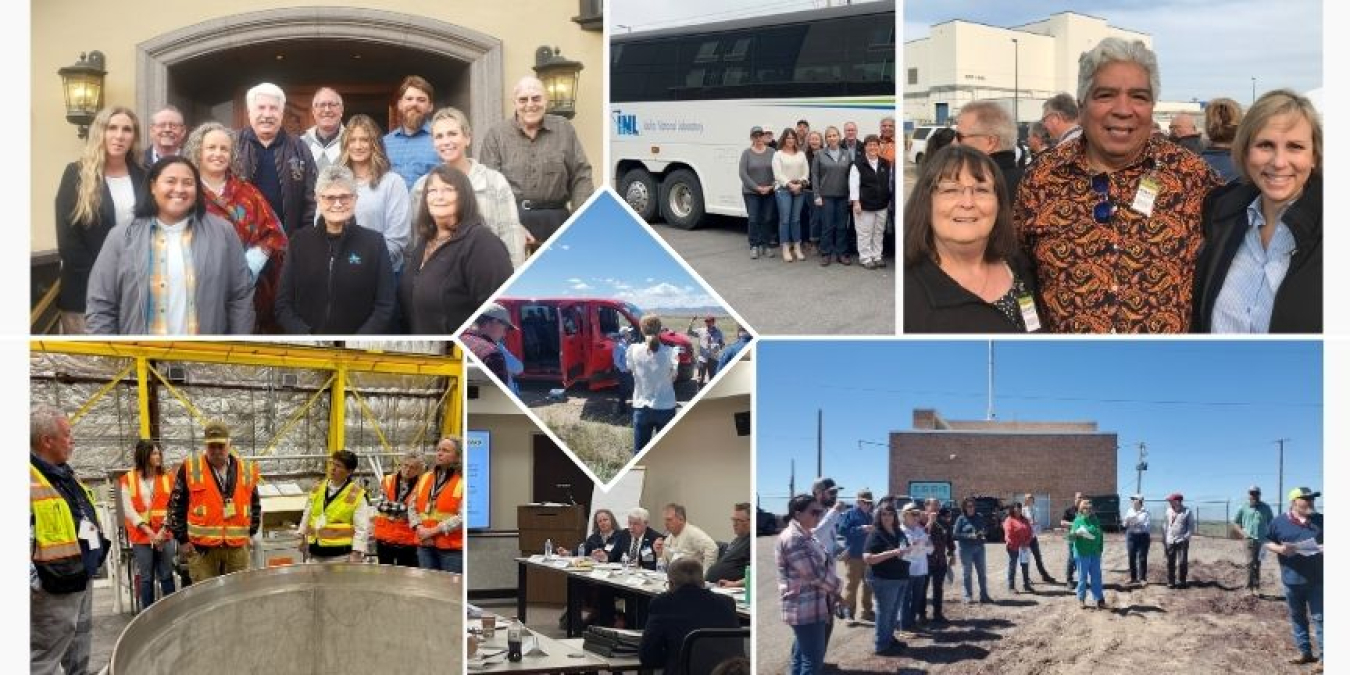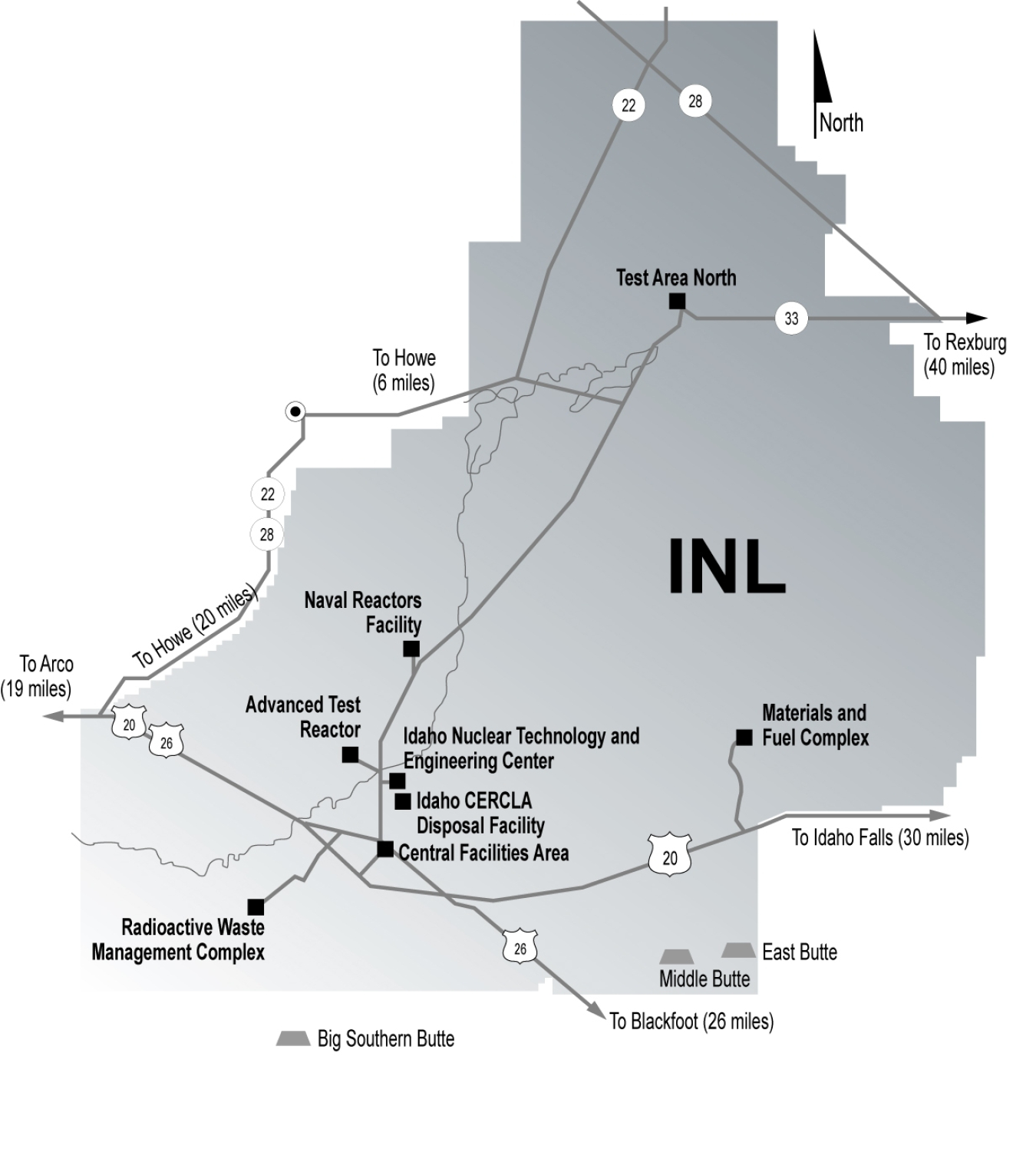
Interested in becoming a member of the ICP CAB? Click Here
The Idaho Cleanup Project Citizens Advisory Board (ICP CAB) operates as part of the Department of Energy's (DOE's) Environmental Management Site-Specific Advisory Board (EM SSAB). The EM SSAB was developed to involve stakeholders more directly in DOE EM cleanup decisions. While only one Federal Advisory Committee Act-chartered EM SSAB exists, eight local Boards under the EM SSAB umbrella charter have been organized for EM activities at Hanford in Washington State, Idaho, Northern New Mexico, Nevada, Oak Ridge in Tennessee, Paducah in Kentucky, Portsmouth in Ohio, and Savannah River in South Carolina.
Under the EM SSAB charter, the ICP CAB is a stakeholder board that provides the Assistant Secretary of EM, and designees, with advice, information, and recommendations on issues affecting the EM program at various sites. These issues include: Cleanup standards and environmental restoration, waste management and disposition, stabilization and disposition of non-stockpile nuclear materials, excess facilities, future land use and long-term stewardship, risk assessment and management, and cleanup science and technology activities.
The ICP CAB was formed in 1994 in accordance with the Federal Advisory Committee Act (FACA) and consists of 12 members who represent a wide variety of key perspectives on issues of relevance to Idaho citizens. The Board's operating procedures are available online. The ICP CAB's membership is carefully considered to reflect a diversity of viewpoints in the affected community and region. Members include natural resource users; former Idaho National Laboratory (INL) workers; representatives of local government, health care, labor, higher education, and business; and the general public. One member represents the Shoshone-Bannock Tribes. Additional non-voting liaisons include representatives from the U.S. Department of Energy Idaho Operations Office, the U.S. Environmental Protection Agency Region 10, and the State of Idaho Department of Environmental Quality. The liaisons provide information to the board on their respective agency's policies and views.
The ICP CAB holds its meetings four times a year, and all meetings are open to the public. They are announced in public advertisements, the Federal Register, and are posted on this website. Members of the public are encouraged to attend and ask questions. Time is allotted at each meeting for the public to comment on the cleanup program. Agendas and minutes for the public meetings are available online or by contacting us. Copies of all ICP CAB recommendations are also available.

INL History and Cleanup Agreements
The INL, an 890-square-mile section of desert in southeast Idaho, was established in 1949 as the National Reactor Testing Station. Initially, the missions at INL were the development of civilian and defense nuclear reactor technologies and management of spent nuclear fuel. Fifty-two reactors, most of them first-of-a-kind, were built, including the Navy's first prototype nuclear propulsion plant. Of the 52 reactors, three remain in operation at the site. In 1951, the INL achieved one of the most significant scientific accomplishments of the century-the first use of nuclear fission to produce a usable quantity of electricity at the Experimental Breeder Reactor No. 1 (EBR-1). The EBR-1 is now a Registered National Historic Landmark open to the public.
Beginning in the 1950s the emphasis of work at the site turned toward defense missions. The support of the Navy nuclear propulsion program continued and INL became a training site for Navy reactor operators. The Chemical Processing Plant (now known as the Idaho Nuclear Technology Engineering Center or INTEC) was constructed to reprocess spent nuclear fuel from Navy submarines to recover uranium to be used in nuclear weapons applications. Plutonium contaminated waste from nuclear weapon production at Rocky Flats, Colorado was shipped to INL for disposal. Much of the current Idaho Cleanup Project is focused on cleanup of contamination at the INTEC and at the plutonium contaminated waste burial grounds at the Radioactive Waste Management Complex (RWMC).
Agreements involving DOE, the Environmental Protection Agency, the State of Idaho and the Shoshone-Bannock Tribes affect the EM program at INL.
The Federal Facility Agreement/Consent Order governs the cleanup process for INL. The Idaho Site is divided into Operable Units corresponding to current or former site operating facilities plus one additional Operable Unit that addresses groundwater, ecological resources, and new site identification and inclusion. DOE's contractor, Fluor Idaho, is responsible for implementing the Idaho Cleanup Project at INL.
A 1995 Settlement Agreement resolving a dispute between DOE and the State of Idaho over waste and spent fuel management establishes commitments on the part of DOE for shipment of transuranic waste out of Idaho, treatment of high-level waste to ready it for shipment out of Idaho, and a 2035 milestone for removal of spent nuclear fuel from Idaho. In return for these commitments, the continued receipt of spent nuclear fuel at INL is authorized and monitored by the State.
A Site Treatment Plan explains how the Department of Energy will come into compliance with federal law governing the management of "mixed wastes" at INL. Mixed wastes are those contaminated with both radiological and hazardous components. The Site Treatment Plan was approved by the State of Idaho, which has authority to regulate mixed wastes at INL.
DOE and the State of Idaho implement the Environmental Oversight and Monitoring Agreement. The goals of this Agreement are to maintain an independent, impartial, and qualified State of Idaho INL Oversight Program to assess the potential impacts of present and future DOE activities in Idaho; to assure the citizens of Idaho that all present and future DOE activities in Idaho are protective of the health and safety of Idahoans and the environment; and to communicate the findings to the citizens of Idaho in a manner which provides them the opportunity to evaluate potential impacts of present and future DOE activities in Idaho.
A DOE/Shoshone-Bannock Tribal Agreement in Principle or Tribal Working Agreement defines interfaces between the Department of Energy and the Shoshone-Bannock tribes, who are located at the Fort Hall Indian Reservation southeast of the Idaho site. The agreement also describes the technical and financial assistance DOE will provide to the tribes.
Additional information on these Agreements is available by clicking here.

